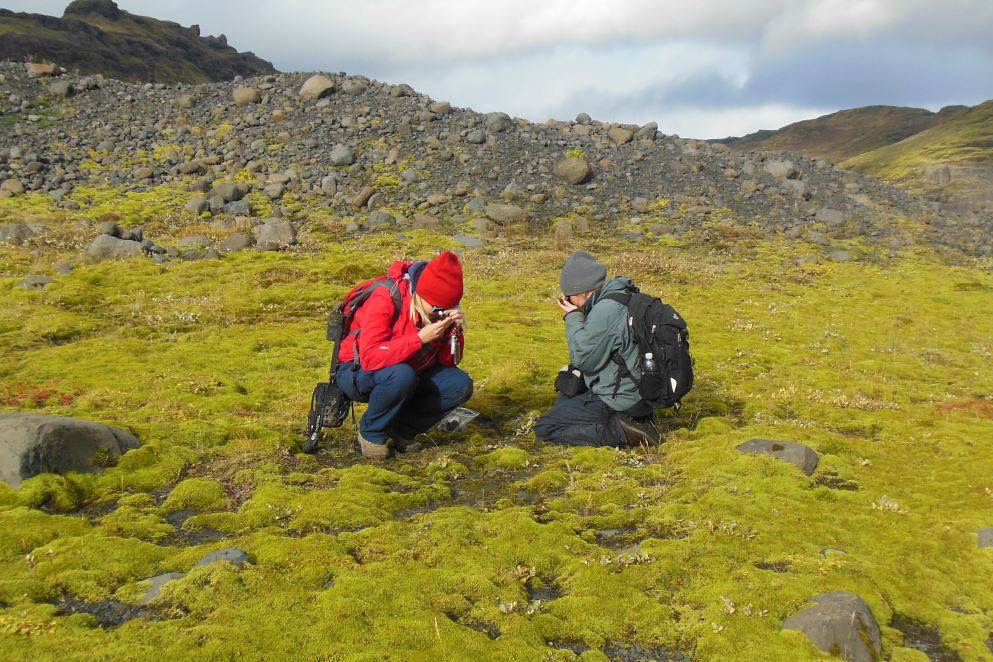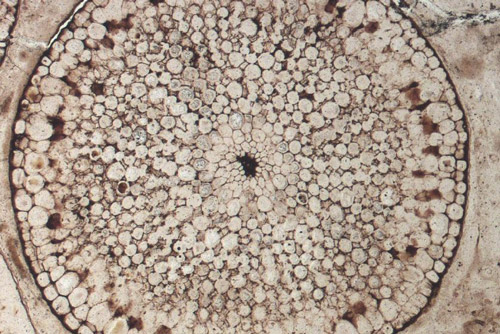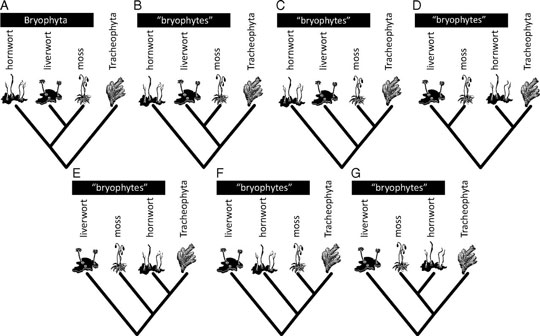Plants May Have Originated 100 Million Years Earlier
Pushing Back the Origins of Plants by 100 Million Years
An analysis of the genes of living plants has revealed that the very first plants may have evolved 100 million years earlier than the fossil record suggests. Writing in the academic journal “Proceedings of the National Academy of Sciences (USA)”, researchers conclude that the first plants to colonise the Earth evolved around 500 million years ago, whereas, the current known fossil record provides evidence of plant spores from Ordovician-aged rocks and the first Rhyniophytes, Bryophytes and Lycophytes originated in the Silurian approximately 420 to 400 million years ago.
The Research Team Examined the Origins of Early Land Plants
Picture credit: Paul Kenrick (Natural History Museum, London)
Lead author of the study, Dr Philip Donoghue (Department of Earth Sciences, Bristol University) commented:
“Land plants emerged on land half a billion years ago, tens of millions of years older than the fossil record alone suggests.”
Evolved from Pond Scum
The current theory is that true plants, capable of surviving in a terrestrial environment evolved from “pond scum”. Plants play a hugely important role in shaping the climate of our planet through photosynthesis and respiration. The greening of the Earth permitted terrestrial environments to be opened up for exploitation by the first land animals. Plants can help to establish and maintain soils and the roots of plants play a vital role in the physical and chemical weathering of rocks. The breaking down of rocks is a key process in the carbon cycle that regulates the Earth’s atmosphere and climate.
Tracing Evolution Using a Molecular Clock
The scientists, which included Dr Mark Puttick from the Natural History Museum (London), used a molecular clock which analysed the combined evidence of genetic differences between related living species and the fossils of ancient ancestors. The concept of a molecular clock works on the assumption that evolutionary changes occur at regular time intervals. If the rate of genetic change (mutation), in the DNA of an organism can be compared to the genome of a closely related species then their relationship can be tracked back through time, identifying the characteristics of a common ancestor. Tracking back using this methodology, the team concluded that the first plants evolved much earlier than previously thought.
Co-lead author of the research, Dr Jennifer Morris (Bristol University), explained:
“The global spread of plants and their adaptations to life on land, led to an increase in continental weathering rates that ultimately resulted in a dramatic decrease the levels of the “greenhouse gas” carbon dioxide in the atmosphere and global cooling. Previous attempts to model these changes in the atmosphere have accepted the plant fossil record at face value, our research shows that these fossil ages underestimate the origins of land plants and so these models need to be revised.”
An Incomplete and Sparse Fossil Record
The fossil record of early plants is particularly poor. It is far too incomplete to act as a reliable guide to the evolution and origin of land plants. The molecular clock allowed the team to compare differences in the genetic make-up of extant plant species, these relative genetic differences were then converted into geological ages using the sparse fossil record as a loose framework. This work suggests that the ancestor of land plants was living in the middle of the Cambrian and it is similar in age as the first known terrestrial animals.
A Cross Section of the Devonian Land Plant Rhynia gwynne-vaughanii from Scotland
Picture credit: Natural History Museum, London
A Taxonomic Conundrum
The research into the origins of land plants has been complicated as the taxonomic relationships between the earliest land plants are not clear and distinct. Using similarities in the shape and structure of land plants, scientists have mapped a number of conflicting outcomes for a cladistic analysis of early plant relationships between the most primitive groups such as the Bryophytes (liverworts and mosses) and the vascular plants (Tracheophytes) and a primitive sub-group of vascular plants, the Lycophytes. Using the molecular clock model to map phylogenetic relationships the team identified several evolutionary family trees for the early plants. The liverworts could be a sister clade to all other land plants, with either mosses, hornworts or a moss-hornwort grouping as the sister group to the Tracheophytes.
Seven Alternative Cladistic Relationships for Early Plants were Considered in the Study
Picture credit: Proceedings of the National Academy of Sciences
However, when each of these phylogenetic relationships was tested in turn, against the molecular clock model, the end result still indicated an origin of land plants some 100 million years earlier than previously thought. The researchers conclude that the first land plants may therefore have originated during the Late Cambrian or at the latest during the Early Ordovician.
The scientific paper: “Timescale of Early Land Plant Evolution” by J. L. Morris, M. N. Puttick, J. Clark, D. Edwards, P. Kenrick, S. Pressel, C. H. Wellman, Z. Yang, H. Schneider and P. C. J. Donoghue, published in the Proceedings of the National Academy of Sciences (USA).
Visit the Everything Dinosaur website: Everything Dinosaur.




